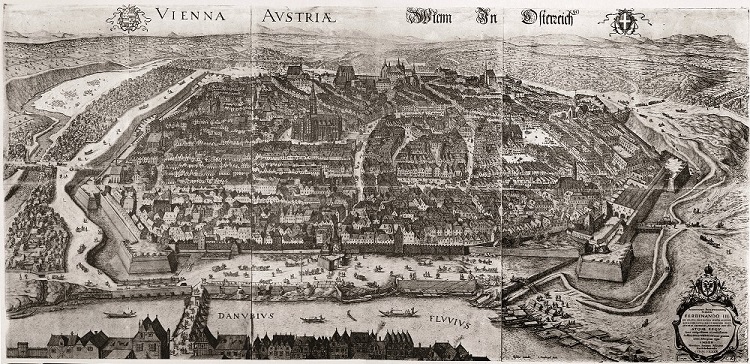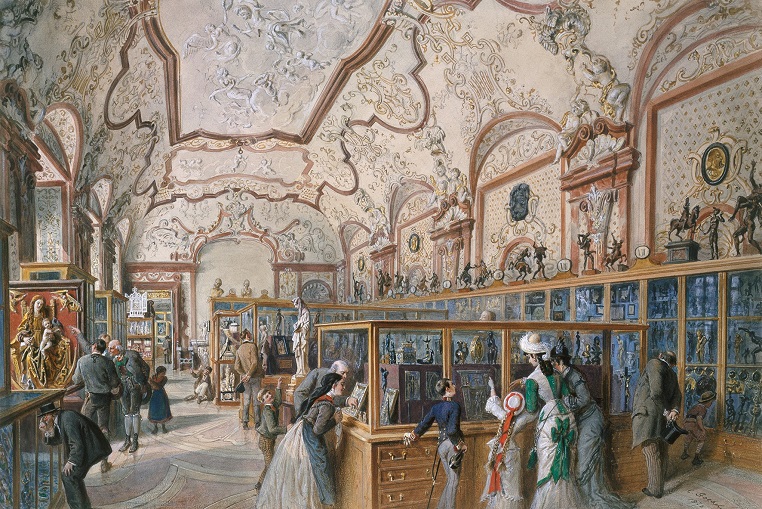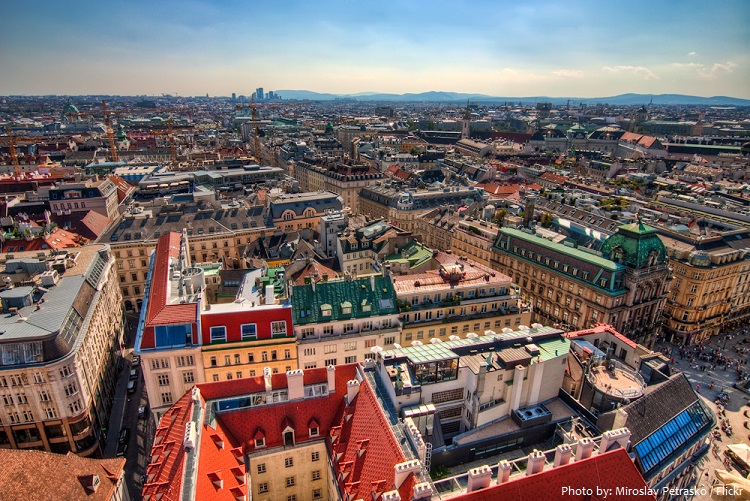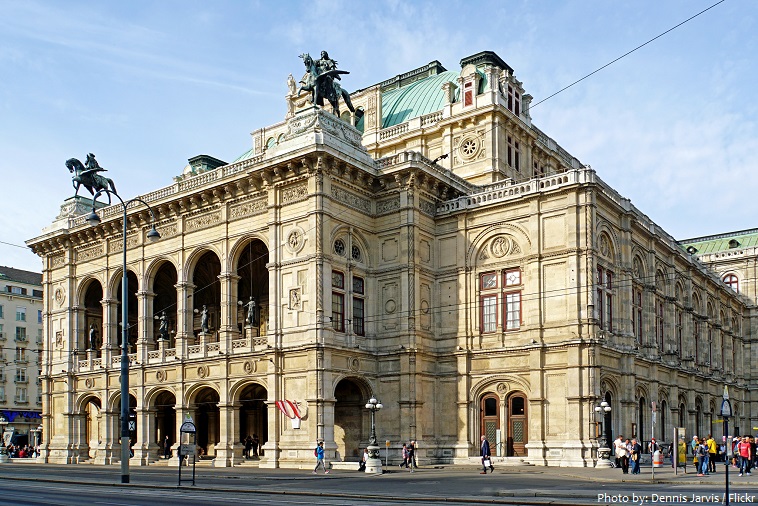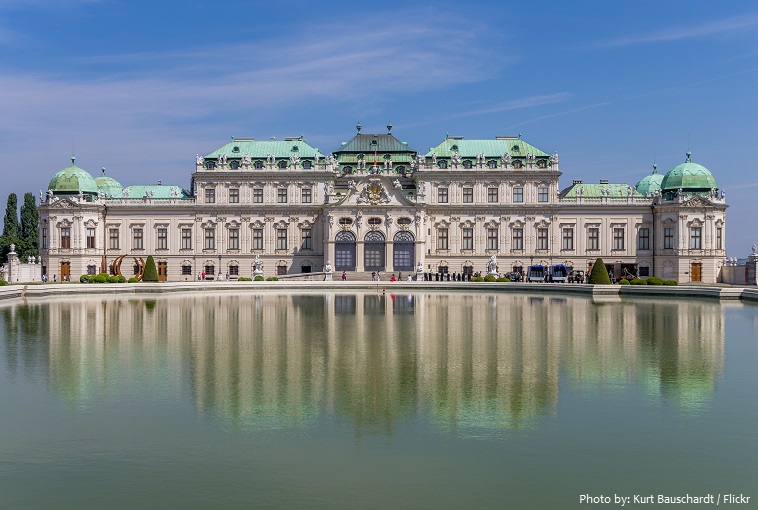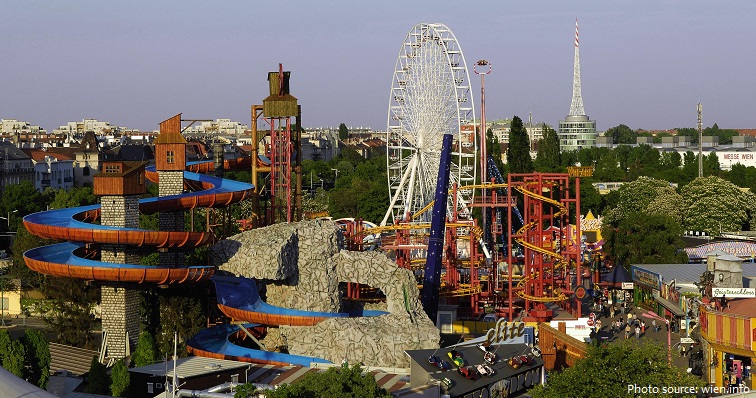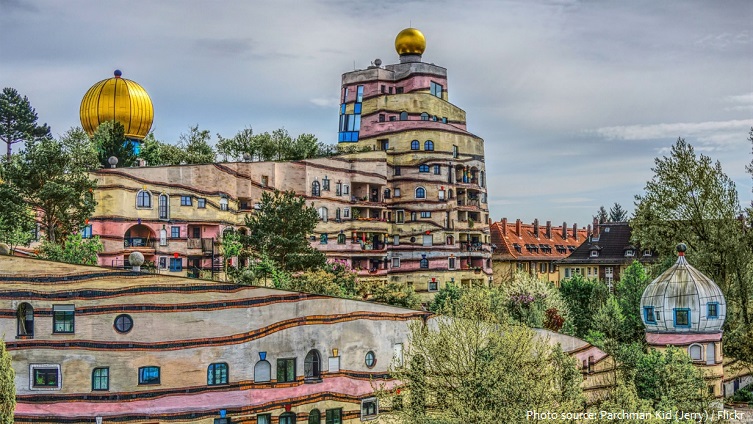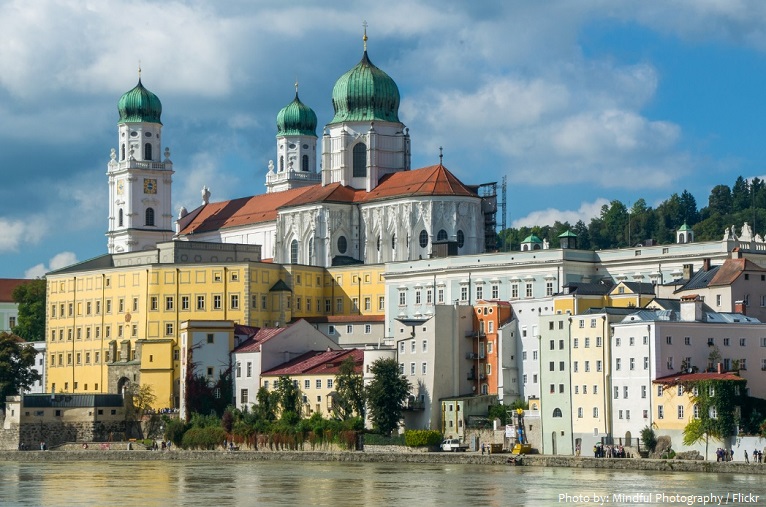Vienna is the capital and largest city of Austria and one of the nine states of Austria.
The city is located in northeastern Austria, at the easternmost extension of the Alps in the Vienna Basin.
As of January 2018, the population of Vienna is about 1.8 million people.
Vienna has a total area of 414.65 square kilometers (160.1 sq mi), making it the largest city in Austria by area.
Elevation ranges from 151 to 542 meters (495 to 1,778 feet).
The earliest settlement, at the location of today’s inner city, was south of the meandering Danube while the city now spans both sides of the river.
Evidence has been found of continuous habitation in the Vienna area since 500 BC, when Celts settled the site on the Danube River.
In 15 BC the Romans fortified the frontier city they called Vindobona to guard the empire against Germanic tribes to the north.
It became the capital of the Babenberg dynasty and subsequently of the Austrian Habsburgs, under whom it became one of Europe’s cultural hubs.
During the 19th century as the capital of the Austrian Empire and later Austria-Hungary, it temporarily became one of Europe’s biggest cities. Since the end of World War I, Vienna has been the capital of the Republic of Austria.
With an unmistakably cosmopolitan atmosphere, Vienna retains a distinctive charm and flair, accentuated by its fine old architecture, its famous horse-cabs (Fiaker), as well as its splendid coffee houses with their Viennese cakes and pastries.
Schönbrunn Palace is a former imperial summer residence located in Vienna, Austria. It is one of the most important architectural, cultural, and historical monuments in the country. Schönbrunn Palace is one of Europe’s most impressive Baroque palace complexes. UNESCO catalogued Schönbrunn Palace on the World Heritage List in 1996, together with its gardens, as a remarkable Baroque ensemble and example of synthesis of the arts.
The Hofburg is also the former imperial palace in the centre of Vienna, Austria. Built in the 13th century and expanded in the centuries since, the palace has been the seat of power of the Habsburg dynasty rulers, and today the official residence and workplace of the President of Austria. It was the principal imperial winter residence, as Schönbrunn Palace was the summer reside.
The Vienna State Opera is an opera house located in the center of Vienna, Austria. In 1920, with the replacement of the Habsburg Monarchy by the First Austrian Republic, it was renamed the Vienna State Opera. It is one of the most famous operas in the whole world.
The Belvedere is a historic building complex in Vienna, Austria, consisting of two Baroque palaces (the Upper and Lower Belvedere), the Orangery, and the Palace Stables. The buildings are set in a Baroque park landscape in the third district of the city, on the south-eastern edge of its centre. It houses the Belvedere museum.
The Prater is a large public park in Vienna’s 2nd district. The Wurstelprater amusement park, often simply called “Prater”, lies in one corner of the Wiener Prater and includes the Wiener Riesenrad Ferris wheel. The name Prater derives from one or the other or possibly both Latin words pratum, meaning meadow, and Praetor, meaning magistrate or lawyer, possibly via Spanish prado or Italian prato.
The Hundertwasserhaus is an apartment house in Vienna, built after the idea and concept of Austrian artist Friedensreich Hundertwasser with architect Joseph Krawina as a co-author. This expressionist landmark of Vienna is located in the Landstraße district on the corner of Kegelgasse and Löwengasse.
St. Stephen’s Cathedral is the mother church of the Roman Catholic Archdiocese of Vienna and the seat of the Archbishop of Vienna, Christoph Cardinal Schönborn, OP. The current Romanesque and Gothic form of the cathedral, seen today in the Stephansplatz.
Vienna is well known for having played an essential role as a leading European music center, from the great age of Viennese Classicism through the early part of the 20th century.
Musical luminaries including Wolfgang Amadeus Mozart, Joseph Haydn, Ludwig van Beethoven, Ferdinand Ries, Franz Schubert, Johannes Brahms, Gustav Mahler, Robert Stolz, and Arnold Schoenberg have worked there.
Apart from being regarded as the City of Music because of its musical legacy, Vienna is also said to be “The City of Dreams” because it was home to the world’s first psychotherapist – Sigmund Freud.
The historic center of Vienna is rich in architectural ensembles, including Baroque castles and gardens, and the late-19th-century Ringstraße lined with grand buildings, monuments and parks.
Vienna is known for its high quality of life. In a 2005 study of 127 world cities, the Economist Intelligence Unit ranked the city first (in a tie with Vancouver, Canada and San Francisco, USA) for the world’s most liveable cities.
Art and culture had a long tradition in Vienna, including theatre, opera, classical music and fine arts.
Vienna is home to the world’s oldest zoo, the Tiergarten Schönbrunn. It was founded as an imperial menagerie in 1752.
Almost every Austrian city has its trademark cake. The most famous Austrian cake is the Viennese Sachertorte, a rich chocolate cake invented by Chef Franz Sacher for Chancellor Metternich in 1832.
Vienna is well known for Wiener Schnitzel, a cutlet of veal (Kalbsschnitzel) or pork (Schweinsschnitzel) that is pounded flat, coated in flour, egg and breadcrumbs, and fried in clarified butter.

